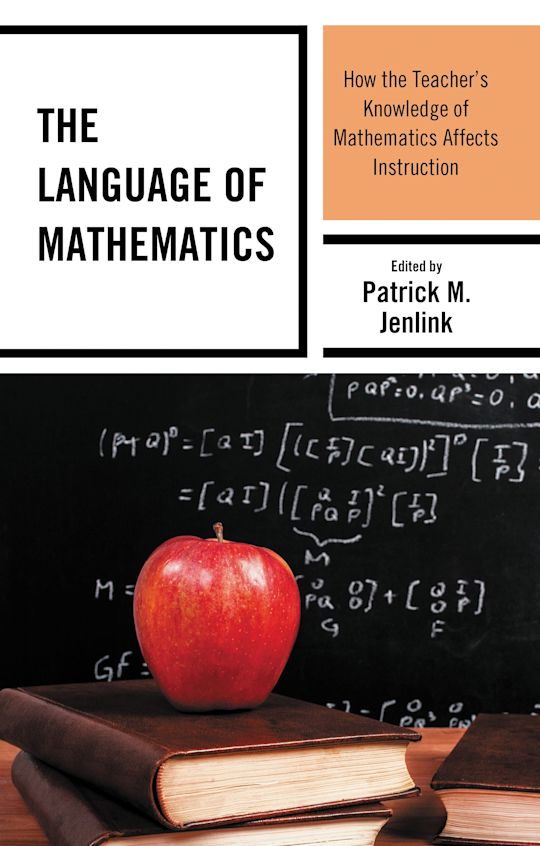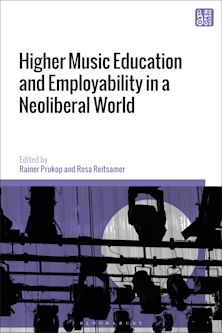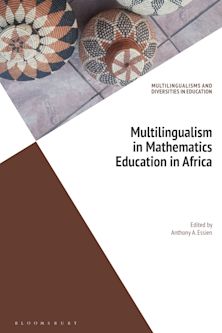- Home
- ACADEMIC
- Education
- Teaching Specific Subjects
- The Language of Mathematics
The Language of Mathematics
How the Teacher's Knowledge of Mathematics Affects Instruction
The Language of Mathematics
How the Teacher's Knowledge of Mathematics Affects Instruction
You must sign in to add this item to your wishlist. Please sign in or create an account
Description
The Language of Mathematics: How the Teacher’s Knowledge of Mathematics Affects Instruction introduces the reader to a collection of thoughtful works by authors that represent current thinking about mathematics teacher preparation. The book provides the reader with current and relevant knowledge concerning preparation of mathematics teachers. The complexity of teaching mathematics is undeniable and all too often ignored in the preparation of teachers with substantive mathematical content knowledge and mathematical teaching knowledge. That said, this book has a focus on the substantive knowledge and the relevant pedagogy required for preparing teachings to enter classrooms to teach mathematics in K-12 school settings. Each chapter focuses on the preparation of teachers who will enter classrooms to instruct the next generation of students in mathematics. Chapter One opens the book with a focus on the language and knowledge of mathematics teaching. The authors of Chapters Two-Nine present field-based research that examines the complexities of content and pedagogical knowledge as well as knowledge for teaching. Each chapter offers the reader an examination of mathematics teacher preparation and practice based on formal research that provides the reader with insight into how the research study was conducted as well as providing the findings and conclusions drawn with respect to mathematics teacher preparation and practice. Finally, Chapter 10 presents an epilogue that focuses on the future of mathematics teacher preparation.
Table of Contents
Preface
Acknowledgements
Chapter 1. Understanding the Language and Knowledge of Mathematics: Preparing Mathematics Teachers of Substantive Knowledge
Patrick M. Jenlink
Chapter 2. Cultivating Dispositions for Teaching and Learning Elementary Mathematics
Michelle C. Hughes
Chapter 3. Preservice Elementary Education Majors’ Attitudes about Mathematics: A Semantic Differential
Carmen M. Latterell and Janelle L. Wilson
Chapter 4. Addressing Math Phobia at its Source: A Case Study
Melinda (Mindy) Eichhorn and Courtney Lacson
Chapter 5. A Teacher’s Perspective of Quantitative Literacy in Middle School Mathematics
Heather Crawford-Ferre and Diana L. Moss
Chapter 6. Something Doesn’t Add Up: Math Teachers and Student-centered Pedagogy
David Nurenberg and Se-Ah Kwon Siegel
Chapter 7. A Phenomenological Study: Incorporating the History of Mathematics from the Perspectives of Teachers
Sinem Sozen Ozdogan, Didem Akyuz and Erdinc Cakiroglu
Chapter 8. Professional Development to Support the Learning and Teaching of Geometry: Examining the Impact on Teacher Knowledge, Instructional Practice, and Student Learning in Two Contexts
Jennifer K. Jacobs, Karen Koellner, Nanette Seago, Helen Garnier, and Chao Wang
Chapter 9. Complex Adaptive Model of Algebra Professional Development
Sarah Smitherman Pratt and Colleen McLean Eddy
Chapter 10. Epilogue: Looking Toward the Future of Mathematics Teacher Preparation
Patrick M. Jenlink
About the Editor and Authors
Product details
| Published | Feb 04 2020 |
|---|---|
| Format | Ebook (PDF) |
| Edition | 1st |
| Extent | 220 |
| ISBN | 9798765177501 |
| Imprint | Rowman & Littlefield Publishers |
| Illustrations | 7 b/w illustrations; 336 tables |
| Publisher | Bloomsbury Publishing |
About the contributors
Reviews
-
Drawing on multiple quantitative and qualitative research methods, this collection of essays regarding in-service teacher training provides valuable information to many different stakeholders in mathematics education. Math educators at all levels will find value in the overarching framework that summarizes mathematical knowledge for teaching. Moreover, courses on math methods will benefit from the discussions on the role of teachers in promoting positive dispositions toward math, reducing math anxiety, and combating apathy toward the subject by demonstrating the utility of mathematics. The needs of in-service teachers are also addressed through sections on content-focused professional development as a means of driving instructional change in the classroom. Throughout the volume, the importance of a rich understanding of math is evident, from both mathematicians' and teachers' points of view. This book is well suited for math educators at two- and four-year universities and for those who mentor pre-service or in-service teachers. Summing Up: Recommended. Lower-division undergraduates through faculty.
Choice Reviews
-
The Language of Mathematics presents studies on the types of knowledge and dispositions that mathematics teachers need to be effective. The authors offer various perspectives on preparing future mathematics teachers to address both what and how students are learning.
Kadian M. Callahan, Assistant Dean for Faculty and Student Success, Associate Professor of Mathematics Education, College of Science and Mathematics, Kennesaw State University
-
The Language of Mathematics: How the Teacher’s Knowledge of Mathematics Affects Instruction gives its readers effective, research-based strategies stated in voices from the field. It demonstrates the complexity of math learning and teaching, especially how technical components can be intricately connected with psychological processes. This book is an excellent tool for fostering dialogic inquiry among future teachers, teacher educators, and content specialists.
Rui Kang
-
The Language of Mathematics: How the Teacher’s Knowledge of Mathematics Affects Instruction is timely and important. Research reported in the book sheds light on the knowledge needed to teach mathematics in ways that motivate and foster positive attitudes toward mathematics. The book may serve as a resource for mathematics teacher preparation courses.
Dr. James A. Telese, Professor of Mathematics Education, Department of Teaching and Learning, The University of Texas Rio Grande Valley
-
This book is significant for future teachers and teacher educators as it focuses on the fundamental knowledge and pedagogy essential for preparing teachers to teach K-12 mathematics. As a mathematics educator, I found this book expanded my understanding of how that mathematics knowledge requires a multidimensional teaching approach…. This book is an excellent tool for teacher educators and future teachers. Jenlink’s book provides a broad overview of field-based research that examines the consequences of content, pedagogical experience, and knowledge for teaching, with extensive further reading through substantial reference lists. Collectively, the book offers eight effective research chapters that contribute to current knowledge about teacher education programs. The link between the language of mathematics and knowledge of mathematics and mastering the language of mathematics is a fundamental part of teaching mathematics to all learners. I would recommend this book to mathematics educators, including policymakers, researchers, practitioners, and teacher educators.
Educational Studies In Mathematics


































